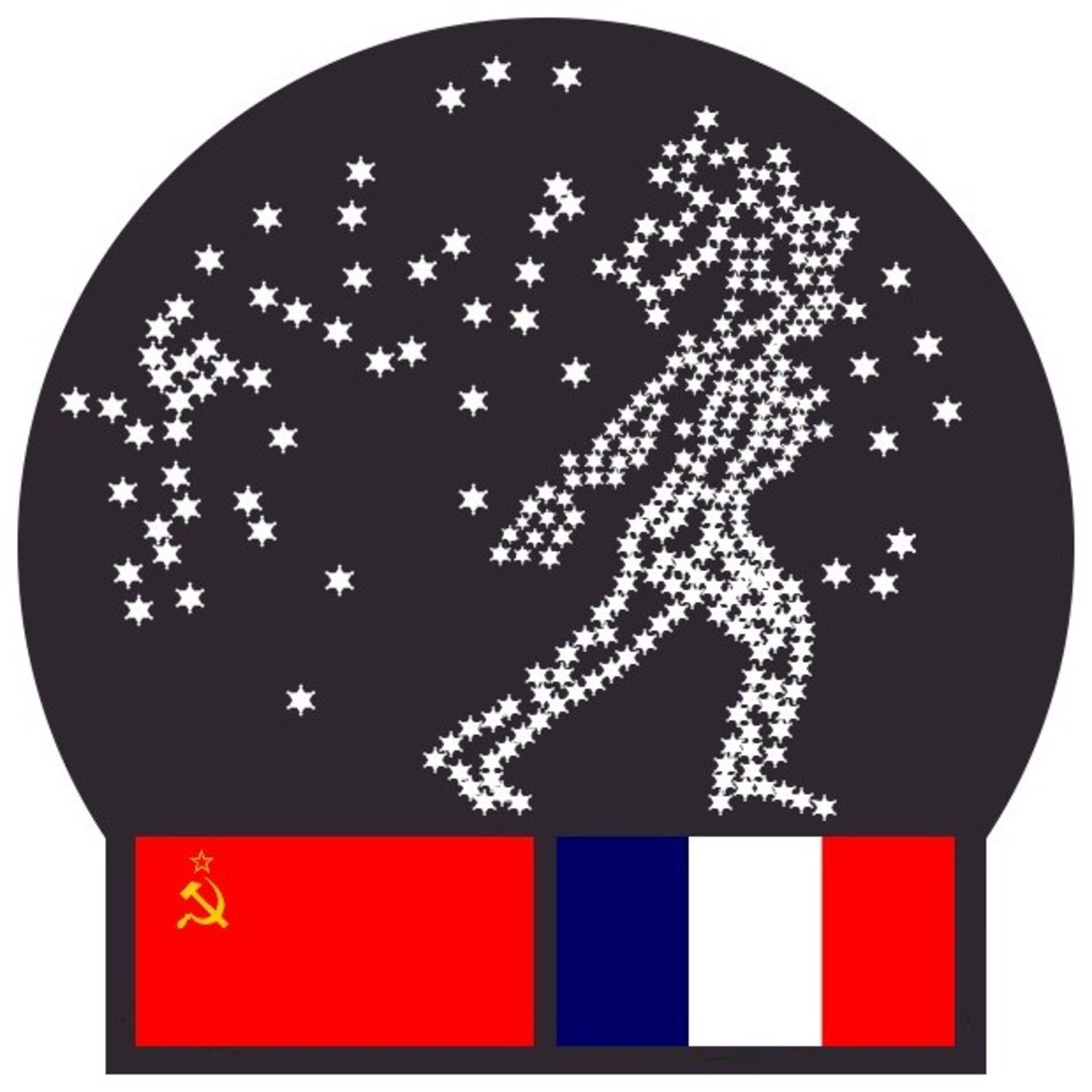HAPPY BIRTHDAY TO THE SOYUZ T-6 STARMAN
ESA patch expert Carl Walker looks at a Soviet space mission patch that almost caused a diplomatic incident…
This week in 1982 saw the Soyuz T-6 mission launch and dock with the Soviet Salyut 7 space station. One of the three cosmonauts on board was Jean-Loup Chrétien, the first French citizen and first western European in space.
Soyuz T-6 lifted off from the Baikonur Cosmodrome carrying Chrétien and crewmates Vladimir Dzhanibekov and Alexander Ivanchenko on 24 June 1982. Once aboard Salyut 7, the three cosmonauts helped to complete joint Soviet-French experiments with the station’s resident crew. The trio returned to Earth on 2 July after spending seven days in space.
This joint Franco-Soviet flight had its own Soyuz patch but this does not appear to have been worn by the crew. Instead, they seem to have adopted the French space agency’s patch for the ‘First Crewed Flight’ (or ‘Premier Vol Habité’, as the mission was known in France).
Cosmonaut Alexei Leonov, the first man to walk in space and himself a talented artist, christened this patch with the nickname ‘the beekeeper’. To its designer though, it was known as ‘L’Homme etoile’, or the ‘Starman’. Sat on a base of Soviet Russian and French flags, a navy blue circle provides a background of space for the shape of a running human figure formed from stars. The figure is leaning forward as if crossing the finishing line of a race, with more stars streaming from its body.
The story of this distinctive patch goes back to April 1979, when the Soviet Union offered France the opportunity to fly a cosmonaut on board a joint Soviet-French spaceflight. This would be along the same lines as the agreement to fly non-Soviet cosmonauts from member countries of the Interkosmos programme (a programme of international cooperation led by the Soviet Union with primarily political objectives and trying to establish good relations with the countries of eastern Europe).
French space agency CNES accepted the invitation and began a selection process for its first ‘spationautes’ in September 1979. Two finalists were named in June 1980, Chrétien and fellow French air force pilot Patrick Baudry.
For their mission patch design, CNES approached the French artist Michel Granger in early 1982. Granger was known for his cover artwork on the Oxygène and Equinoxe albums by pioneering electronic musician Jean-Michel Jarre.
In a recent interview, Granger said, “I wasn’t sure how I could do something like that. But in fact, I quickly found the central element, because for me, a guy who goes into space is a star-man, he was a magical character made up of stars. The idea came relatively quickly. I don’t remember looking at it for days and days, hours and hours, that’s for sure.”
Granger continued, “Well, it’s also because they accepted it right away. Because sometimes you find ideas like that and then people don’t accept [them]. So we go in other directions, and afterwards, sometimes we get lost. But this seemed pretty logical to me, this character, ‘Starman’, as I called him.”
Granger remembers, “Once the design was decided, it was not so easy. I know there were little stories about putting the French flag on the right and the Soviet flag on the left, little things like that. At that time, a friend of mine ran the agency that was responsible for the distribution of the logo. And I remember there was a big problem. They couldn’t get [the patch] made because it had to be a special flame-retardant fabric for the spacesuits, and they couldn’t find anyone in France to do it with the embroidered stars.”
Granger explained that the patch was not easy to make, the difficulty being the detail of the embroidered stars. “The original artwork at first had stars, then it ended up as points. Well, anyway, it’s always brush dots, it’s always white spots. But doing it with embroidered thread is not easy.”
According to the designer, this almost created a ‘diplomatic incident’. Finally, the patch was made in the USSR. The final flight version of the patch worn by the crew was likely produced by the Russian Zvezda company, with replicas also made by the Space Commerce Corporation and AB Emblems.
Get your own Space Rocks mission patches in our shop!


